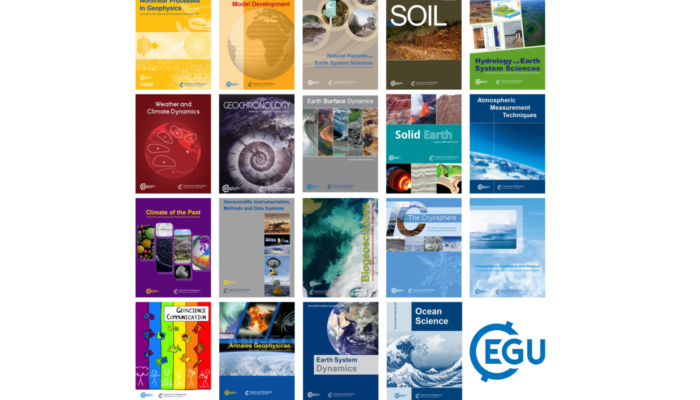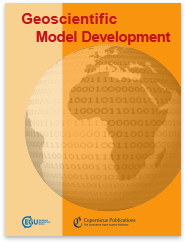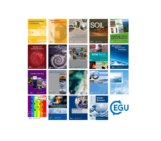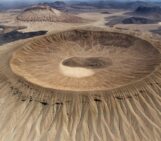
Each month we feature specific Divisions of EGU and during the monthly GeoRoundup we put the journals that publish science from those Divisions at the top of the Highlights roundup. For October, the Divisions we are featuring are: Natural Hazards (NH), Seismology (SM) and Geochemistry, Mineralogy, Petrology and Volcanology (GMPV). They are served by the journals: Geoscientific Model Development (GMD), Solid Earth (SE) and Natural Hazards and Earth System Sciences (NHESS).
Geoscientific Model Development:
 The eWaterCycle platform for open and FAIR hydrological collaboration – 21 October 2022
The eWaterCycle platform for open and FAIR hydrological collaboration – 21 October 2022
With the eWaterCycle platform, we are providing the hydrological community with a platform to conduct their research that is fully compatible with the principles of both open science and FAIR science. The eWatercyle platform gives easy access to well-known hydrological models, big datasets and example experiments. Using eWaterCycle hydrologists can easily compare the results from different models, couple models and do more complex hydrological computational research.
Root-mean-square error (RMSE) or mean absolute error (MAE): when to use them or not – 24 October 2022
The task of evaluating competing models is fundamental to science. Models are evaluated based on an objective function, the choice of which ultimately influences what scientists learn from their observations. The mean absolute error (MAE) and root-mean-squared error (RMSE) are two such functions. Both are widely used, yet there remains enduring confusion over their use. This article reviews the theoretical justification behind their usage, as well as alternatives for when they are not suitable.
Atmospheric Chemistry and Physics:
Stable water isotope signals in tropical ice clouds in the West African monsoon simulated with a regional convection-permitting model – 14 October 2022
Soil carbon loss in warmed subarctic grasslands is rapid and restricted to topsoil – 26 October 2022
Stratigraphic templates for ice core records of the past 1.5 Myr – 7 October 2022
A physical concept in the press: the case of the jet stream – 5 October 2022
Geoscientific Instrumentation, Methods and Data Systems:
Towards a self-sufficient mobile broadband seismological recording system for year-round operation in Antarctica – 19 October 2022
Hydrology and Earth System Sciences:
The Great Lakes Runoff Intercomparison Project Phase 4: the Great Lakes (GRIP-GL) – 10 October 2022
Technical note: Conservative storage of water vapour – practical in situ sampling of stable isotopes in tree stems – 12 October 2022
Clouds drive differences in future surface melt over the Antarctic ice shelves – 3 October 2022
A probabilistic framework for quantifying the role of anthropogenic climate change in marine-terminating glacier retreats – 17 October 2022
Trends in the tropospheric general circulation from 1979 to 2022 – 28 October 2022
EGU science in the news – October 2022
- New tool can help with coordinating climate and air-quality policies to improve public health (Phys.org), based on a study published in the EGU journal Geoscientific Model Development
- Gas flaring: What is it and why is it a problem? (BBC), quotes and references the European Geosciences Union
- The moon also had to endure meteorites when dinosaurs became extinct (New Scientist), based on interview with EGU Division President (Planetary and Solar System Sciences) Stephen Mojzsis
- New tool helps researchers investigate clouds, rain and climate change (Phys.org) based on a study published in the EGU journal Geoscientific Model Development
- Ice flow in Antarctica changes with season, can impact sea-level rise estimates (Down to Earth), based on a study published in the EGU journal Cryosphere
- Soil along streams is a bigger source of stream nitrate than rainwater (Science Daily), based on a study published in the EGU journal Biogeosciences
- Study develops integrated water modeling framework (Water World Magazine), based on a study published in the EGU journal Geoscientific Model Development



